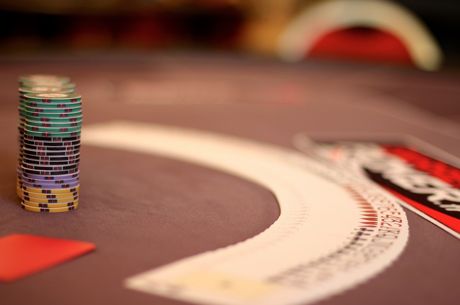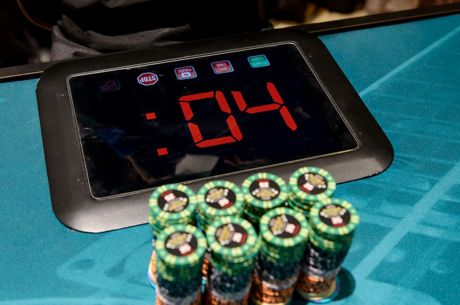Three Strategies for Beating Soft Low Stakes Cash Games

People sometimes complain these days about how tough the cash games are even at the lowest limits online — a topic I considered not long ago in “How to Beat Tough Low Stakes Cash Games”).
However, if you play on some of the smaller lesser known online sites and utilize some table selection — or if you play live at all — then you know that there is still plenty of very loose low stakes action out there.
These games require a completely different approach to beat them, though, and that is what I am going to address those strategies separately here. What follows are three ways you can beat loose low stakes cash games, live or online.
1. Practice Patience, Not Aggression
As I discussed last time, in order to beat the tougher low stakes cash games, you need to identify the weaker regulars and play aggressively in the right spots against them. When you are playing against a bunch of loose calling stations (including recreational players), however, you need to employ the exact opposite strategy.
In these looser games, most of the time when you have nothing it is better just to give up on the pot and let them have it. You can shovel as much money in the middle as you want, but if your opponent won’t fold bottom pair, you are still going to lose the hand. And, of course, your failed bluff attempts will only cost you even more.
Instead, the way to beat a loose calling station is to wait patiently for your opportunities. The reason why is that most recreational players are only first-level thinkers (i.e., thinking about their own hands). They aren’t thinking about what you are trying to represent.
Now don’t get me wrong — I am not advocating here that you wait for aces before getting involved. In fact, against the bad players you should try to get in as many pots with them as possible, ideally when you are in position.
Before the flop, you should often raise when they try to limp in (an “isolation raise”). Then most of the time you should take a stab at the pot on the flop with a continuation bet. This includes any time that you have connected with the board in any way as well as with all of your reasonable no pair/no draw hands such as ace-high and king-high.
The reason why you should continuation bet this wide is that loose calling stations do still fold sometimes, too, and if they are going to fold it will most likely be on the flop. Furthermore, when you are only betting 50%-60% of the pot with your continuation bet (as you should), then you don’t need that many folds in order to turn a profit.
The turn and the river are a different story. If you get called on the flop, this means that they connected with the board in some way. They may only have a weak draw or bottom pair, but they like something about their hand. And players like this do not like to fold when they like something about their hand.
This is why it is crucial that on the turn and river, where the pot starts to get a lot bigger, that you do not make the mistake of trying to bluff these players off of their hands with nothing. Patience instead is the key to success. This often means checking it down or even folding if they bet. (I discuss further the importance of being patient at the micros here.)
2. Value Bet Absurdly Wide
Another key strategy difference when playing against bad opponents — as opposed to decent and competent ones — is that you need to value bet a lot wider.
Against thinking opponents, it often doesn’t make sense to value bet bottom pair or sometimes even middle pair on the river, because they will usually only call with better and fold all worse hands. Loose calling stations, though, will call you down with bottom pair and even ace-high or king-high hands. So while you need to be extra patient against these types of players when you have nothing, ironically you should be hyper-aggressive against them when you have any kind of made hand.
I will routinely bet all three streets with top pair versus these types of players. But I would never do the same against a competent player, because there is no way I could get this much value out of them. In fact, if I am up against a bad player I believe might be on tilt, I might even take a middle-pair hand and just bet all three streets with it for value.
In a nutshell, versus loose calling stations just bet absurdly wide even when you can’t think of a hand with which they can possibly call. They will come up with something.
3. Stagger Your Bet Sizes Both Preflop and Postflop
I famously (or infamously) claimed in my first book, Crushing the Microstakes, that you should stagger your bet sizes versus bad poker players. A lot of people misread this to mean all poker players and criticized me because of it. I was never talking about all poker players, but only the category of players we are focusing on in this article. Versus those players, this is absolutely still the correct strategy.
What do I mean by “staggering” your bet sizes? I mean you should make your raise amount preflop according to the strength of your hand. In a crazily loose, live $1/$2 game, there is no reason why you should be raising the same amount with all of your hands. Your opponents aren’t paying any attention to what your bet sizes mean, so you should simply make it more when you have a premium hand in order to build the pot and prevent too many callers.
The same goes for postflop. If I am trying to pick up the pot with ace-high on the flop, I will make my continuation bet 60% of the pot at most. If I have top pair or better, however, I might just pot it or even over-pot it if I know that my opponent is on tilt against me.
You should never follow any kind of standardized betting rules against really bad poker players. Doing so is only important against competent players who might be paying attention to what you are doing. Against loose calling stations, simply bet more when you have it, and less when you don’t.
Final Thoughts
The strategy to beat loose low stakes cash games is actually very simple. First off, get involved with plenty of hands preflop by coming in for a raise whenever you can. You don’t need to wait for the nuts against opponents who are playing any two cards.
But be patient if you do not hit the board in any meaningful way postflop. The worst thing that you can do is try to bluff a player whose favorite thing to do is call. On the flip side, you should aggressively value bet with all sorts of made hands against these types of opponents because they will call you down extremely wide.
Lastly, don’t be afraid to stagger your bet sizes according to the strength of your hand against really bad players. A marginal increase in the size of your bet size means very little to them if they are intent on calling. But it allows you to build a much bigger pot when you have a big hand and stack them quicker.
Nathan “BlackRain79” Williams is the author of the popular micro stakes strategy books, Crushing the Microstakes and Modern Small Stakes. He also blogs regularly about all things related to the micros over at www.blackrain79.com.
Want to stay atop all the latest in the poker world? If so, make sure to get PokerNews updates on your social media outlets. Follow us on Twitter and find us on both Facebook and Google+!









